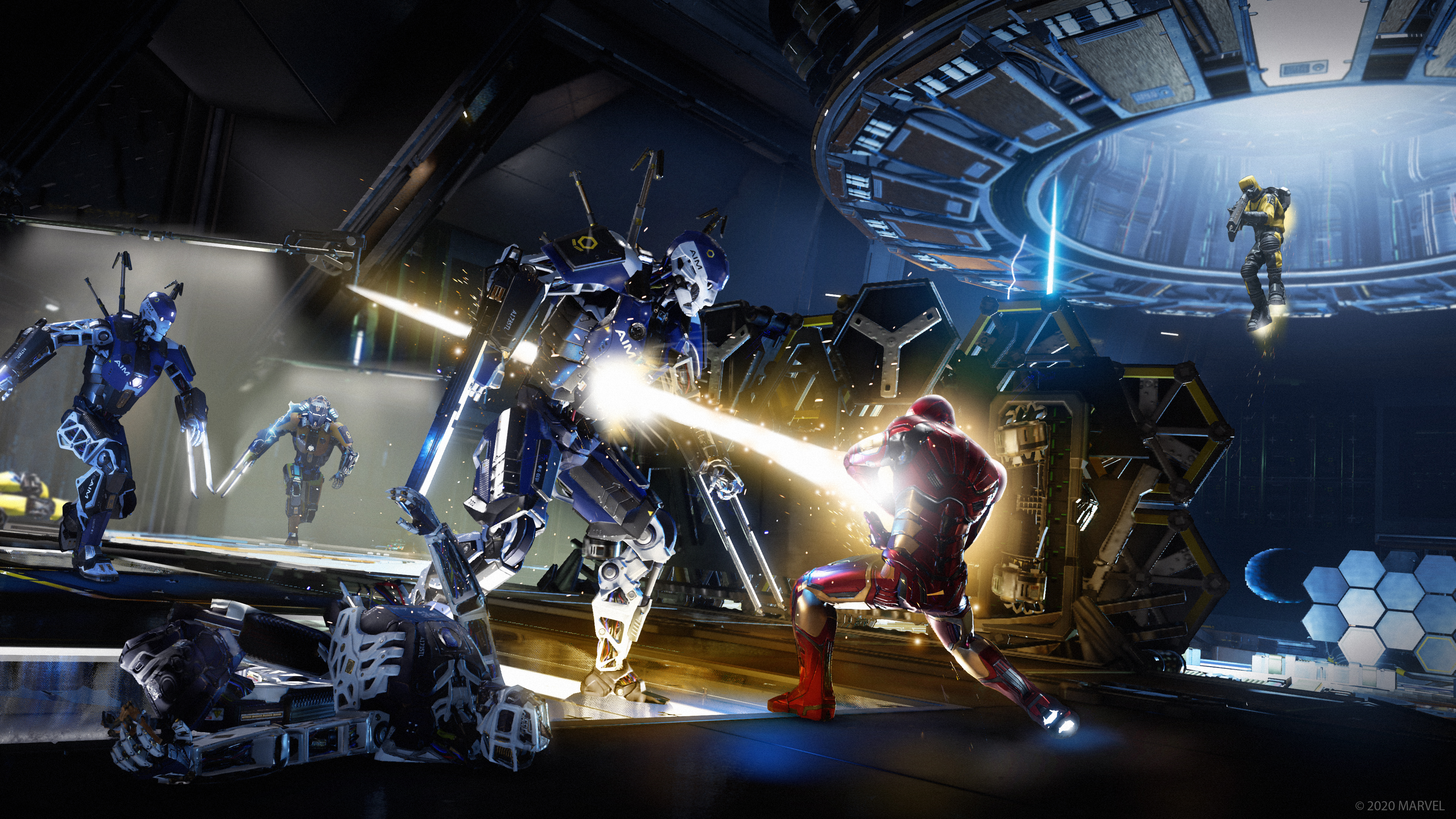TechRadar Verdict
While Marvel's Avengers should be a surefire winner based on the power of its license, it's let down by repetitive missions, a major reliance on gear and some serious frame-rate issues.
Pros
- +
Lots of customization options
- +
Cinematics look great
- +
Kamala Khan is a brilliant protagonist
- +
Character combat feels right
Cons
- -
Missions are boring and repetitive
- -
Frame rates drops a lot
- -
Campaign feels rushed and disjointed
- -
Too much reliance on gear
Why you can trust TechRadar
Time Played: 20 hours
Platform: PS4
Maybe being a superhero isn’t as fun as we thought. After smacking the bejesus out of - what must be - my one hundredth robot in Marvel’s Avengers, it certainly feels that way. When did saving the world become so monotonous? It’s enough to make you envy Hulk’s imprisonment on Sakaar, at least he got to avoid it all for a bit.
There’s a standard we’ve come to expect from a Marvel experience. Whether it’s in comic-book, film, TV or game form, you know that Marvel means a gripping story, iconic and familiar characters, and no-expenses-spared action. So when it comes to Marvel's Avengers game, we expect no less. We want that feeling of pure power, to finally experience what it’s like to throw on a cape, stretch on our spandex and save the world from certain destruction. We want to feel like the childhood fan in us has once again been reignited.
Unfortunately, the Marvel’s Avengers reality is very different from this ideal. The game is faced with a predictable one-note campaign story, repetitive and boring missions, and consistent performance issues. With a license that grants access to so much, we feel like it’s wasted to a degree, and hope that - considering Crystal Dynamics’ plans to support the live service game long term - we will see Earth’s Mightiest Heroes flourish over time.
Marvel's Avengers price and release date
- What is it? Crystal Dynamic’s first Marvel game in a multi-game deal
- Release date? September 4, 2020
- What can I play it on? PS4, Xbox One, Switch, PC, and Google Stadia, with PS5 and Xbox Series X coming soon
- Price? Standard edition is $59.99/£49.99/AU$99.95
With great power...
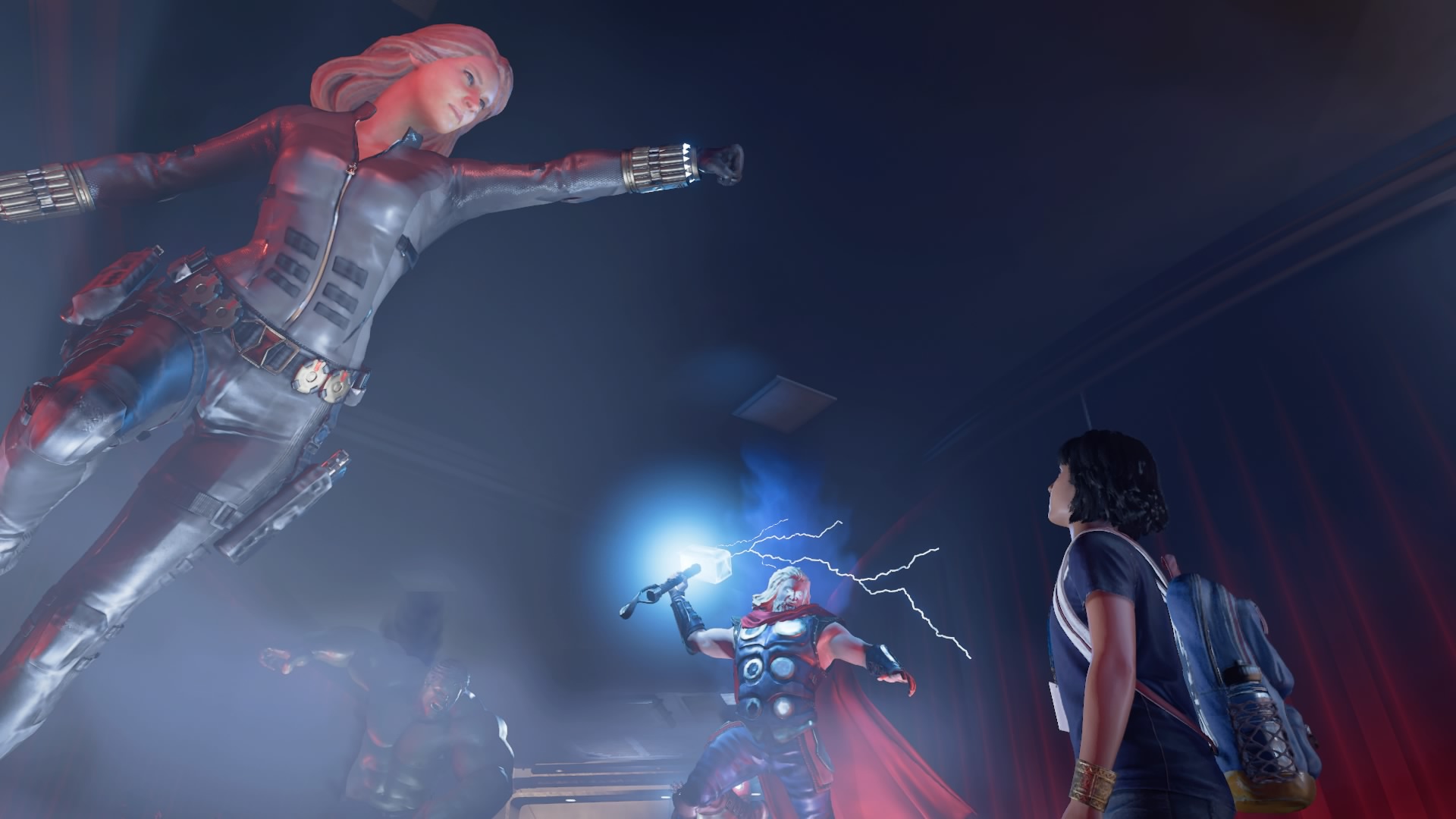
- Avengers Initiative focuses more on assembling with friends
- Reassemble campaign offers linear story mode
- Recommend playing campaign first
Marvel’s Avengers at launch consists of two key ‘operations’: the Reassemble campaign and the multiplayer Avengers Initiative mode. Operations are thematic bundles of content within Marvel’s Avengers, each containing a mix narrative-driven Hero Missions and multiplayer War Zones. Think DLC packs.
The Ressamble campaign does what it says on the tin, offering a linear, story mode for players to take part in. While Avengers Initiative focuses more on assembling with friends for some action-packed superhero shenanigans. Initiative acts as the game’s live service mode, as it were, offering players missions to jump into alone or with friends - with a light story structure and an emphasis on powering up your superhero to take on more challenging missions and unlocking more powerful gear. Think Destiny, with more spandex and quips.
While it’s possible to jump into the Initiative mode from the off, the game suggests playing through the roughly 10-hour campaign first, in order to get to grips with the heroes and to avoid spoilers. And we would advise the same, as the campaign acts as somewhat of a long-winded introduction to the multiplayer mode and gives you a better understanding of the game’s overarching narrative.
The Reassemble campaign kicks off on A-Day, a holiday to celebrate the Avengers which, in this iteration, is made up of Hulk, Thor, Iron Man, Captain America and Black Widow.
Sign up for breaking news, reviews, opinion, top tech deals, and more.
Having recently harnessed a new technology that leads them to merge with S.H.I.E.L.D., the special law enforcement and counter-terrorism agency that deals with superhuman threats, the Avengers are set to showcase the new tech during the event. However, the celebration is interrupted and the tech stolen, resulting in havoc being wreaked upon on San Francisco and the Avengers themselves.The chaos of A-Day sees the Avengers losing one of their own and the public holding the heroes responsible for the lives lost, with the super team ultimately disbanding and going their own ways.
With the Avengers out of the way, a criminal organization called AIM (Advanced Idea Mechanics), emerges with the goal of eradicating all those with super abilities. That includes new supers too, and a major fallout of A-Day was that the unstable new tech caused an explosion that devastated the city, while also causing many of those who were in the blast radius to develop supernatural abilities. Ostracized by society, these new supers are referred to as “Inhumans”, and forced to undergo ‘cures’ by AIM.
One such victim of the blast was young Kamala Khan, who you may know better as Ms.Marvel. Caught up in the blast as a young fan attending A-Day, Kamala develops the ability to polymorph and is on the search for the Inhuman Resistance, who may help her to cure her powers, before ultimately aiming to reassemble the Avengers to take down AIM.
Comes great responsibility

- Care has gone into character creation
- Each hero could be the star of their own game
- Good use of rumble
The Avengers themselves play just as you would imagine, it’s clear that a lot of care and thought has gone into their portrayal in both their playstyle and character - with no two being the same, just as it should be.
Thor is perhaps our favorite Avenger to play because the weight of Mjolnir (his hammer) just feels so right. Each time Mjolnir lands a hit on an enemy, you feel the vibration and it's satisfying as hell - smaller vibrations for normal hits and big ones for heavy attacks. This haptic precision is a small feature, but it adds so much, especially when you throw Mjolnir at enemies, pinning them to walls and then feeling the vibration of Thor snatching the hammer from the air as it flies back. Pair that with raining down some God-like lightning and you feel, to put it simply, powerful.
"It feels like a very ‘paint-by-numbers’ story, that follows the on paper guidelines for what a superhero game should be - action, twists and a baddy to hate on - but never elevates it."
While Thor feels more like rampaging in God of War, Iron Man is more on par with zipping around in Anthem. But Iron Man handles better than Anthem's combat suits. Said simply, his flying feels great. The sensitivity wasn't too much; we could seamlessly move up, down and side to side without flying off much further than anticipated. From the ground, Iron Man can flawlessly hover into the air, firing rockets and shooting as he goes - sometimes even blasting enemies into flames with his laser (but let's ignore the part where superheroes somehow don't kill people).
If you've ever wanted to relive the scene from the Avengers film wherein Hulk picks up Loki and smashes him into the ground like a rag doll - well, you're in luck. Hulk can easily pick up smaller enemies and slam them off everything: the ground, other goons, rocks, you name it. It's as easy as you would imagine it to be for the big guy. If that's not enough, Hulk can also pick up rocks (which annoyingly materialize out of nowhere) and chuck them at enemies, and even uses his thunderclap move to clear groups. He's also surprisingly agile, jumping across large gaps with relative ease and without ever feeling clunky or heavy.
By contrast, Black Widow is Hulk's opposite. The spindly former spy plays like a cross between Tomb Raider and BloodRayne (unsurprising considering Crystal Dynamics made most of the recent Tomb Raider games). Natasha Romanoff is fast, agile and the ultimate hand-to-hand fighter. Black Widow's combat mechanics mainly see her in close combat: grabbing, punching and kicking. However, she also starts with a set of dual-pistols to allow for ranged attacks (a la Lara Croft).
Then we have Cap. Captain America encompasses the hard hitting weapon of Thor with the agility of Black Widow. Cap dodges and weaves through enemies, using his vibranium shield to block heavy attacks or simply to bash some enemy heads in. But the most satisfying move Cap starts with is the ability to throw his shield and quickly knock out every enemy in the radius: like a boomerang of hurt and justice.
Finally, there’s Kamala Khan. As a polymorph, Kamala is super stretchy and can make her hands huge to knock hell out of waves of enemies. These super-stretch abilities also mean she can make herself huge, trampling any unfortunate soul in her way, and swing herself across any pesky gaps.
While each hero comes with some basic abilities (and some special ones), gaining XP allows you to unlock skill points which can be used in skill trees to unlock more new abilities, with each tree focusing on a different aspect of the character’s playstyle. Being able to unlock new abilities helps give each character a little bit more bite but we found that, until you actually start unlocking some more variation (which takes some time), using the same small set of moves again and again grew tiresome quickly. Combat is often boring, amounting to heavy-handedly wiping out waves of enemies without other ways to approach any given situation - especially in the campaign.
We need a hero
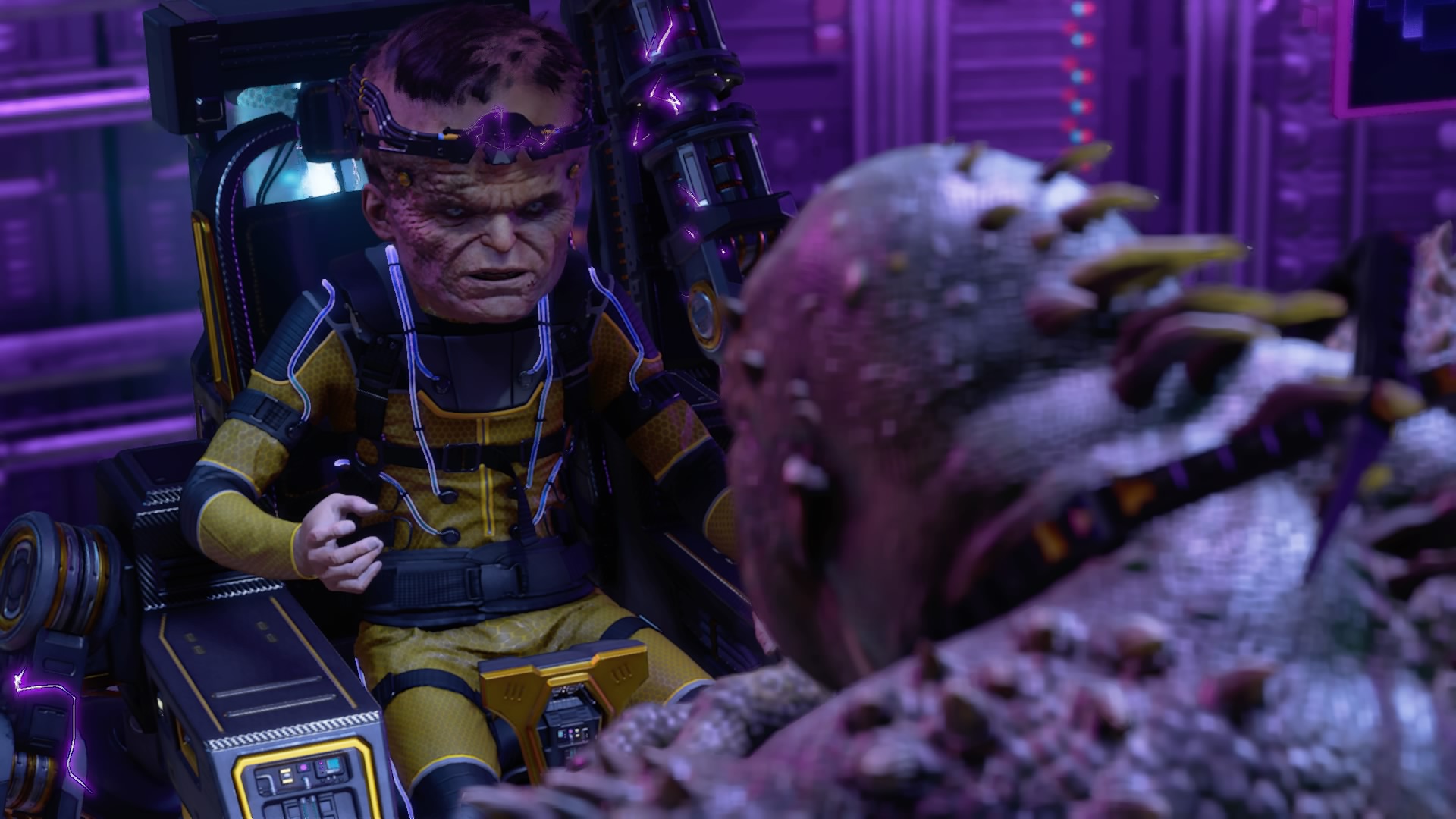
- Kamala is an emotive and relatable protagonist
- Campaign missions feel disjointed from story
- Narrative feels rushed
While the premise of the Reassemble campaign is the classic “let’s get the band back together” trope, Kamala Khan serving as the protagonist elevates it. Not only is Kamala a Muslim, female protagonist, rarely seen in AAA games, but her role as a starry-eyed fan is one that players will likely identify with - after all, who hasn’t wanted to be a superhero at one time.
Kamala Khan is Reassemble’s driving force and the moments of the campaign which highlight Kamala’s insecurities over her Inhuman status are emotive and poignant, but they often feel clouded. We get these wonderful cinematic scenes which put narrative at the forefront and truly feel like a Marvel affair, but they feel overshadowed by the missions themselves and the pacing of the story - which often feels rushed.
"Most of the time you simply are wiping out wave after wave under the umbrella of being part of the main story. It’s mind numbing to a degree."
The campaign narrative isn’t given much room to breathe, which is a massive shame given that there are some really engaging moments. But by the time you’ve begun to sink into these cinematic or narrative-heavy moments, you’re quickly moved along without time to ruminate on what is happening. It feels like a very ‘paint-by-numbers’ story, that follows the on paper guidelines for what a superhero game should be - action, twists and a baddy to hate on - but never elevates it. The story itself, though there are a few twists, is predictable and one-note. We really wish more advantage was taken of the license to pepper in a more varied cast of enemies - some surprises even.
The campaign missions themselves are also disappointing, and feel somewhat disjointed from the story. These missions often see you playing as either a set hero (or one of your choice), and making your way through a fairly restricted environment that has one key objective, which you complete by doing some smaller tasks, and a few optional side objectives scattered about - but even these are limited in variety. While some of these missions are undertaken by just one hero, others can see you leading a merry band of heroes (some of which could include your friends).
While each mission itself varies to some degree, their design feels monotonous and repetitive. For example, one task in an overall objective may require you to stay on point until J.A.R.V.I.S. works its magic on a nearby door, while another may see you destroying some (probably expensive) AIM tech. A different mission may involve these same elements, but in a different order and with a different reasoning. But perhaps our biggest frustration is that there is little variation in enemies, and most of the time you simply are wiping out wave after wave under the umbrella of being part of the main story. It’s mind numbing to a degree.
It feels more like Reassemble is a somewhat long-winded tutorial for Avengers Initiative. Many of the missions feel like they’re there to simply pad out the campaign a bit, but don’t really serve a prominent purpose - and it slows down the story pace massively.
It’s disappointing as, when the campaign does focus on its story primarily, it feels like a proper superhero game. The cutscenes look wonderful, there’s lots of lore to collect and Easter Eggs to find. But the cutscenes and narrative moments feel like a mismatch from the gameplay itself and, in the lulls between the focus on them.
Some assembly required
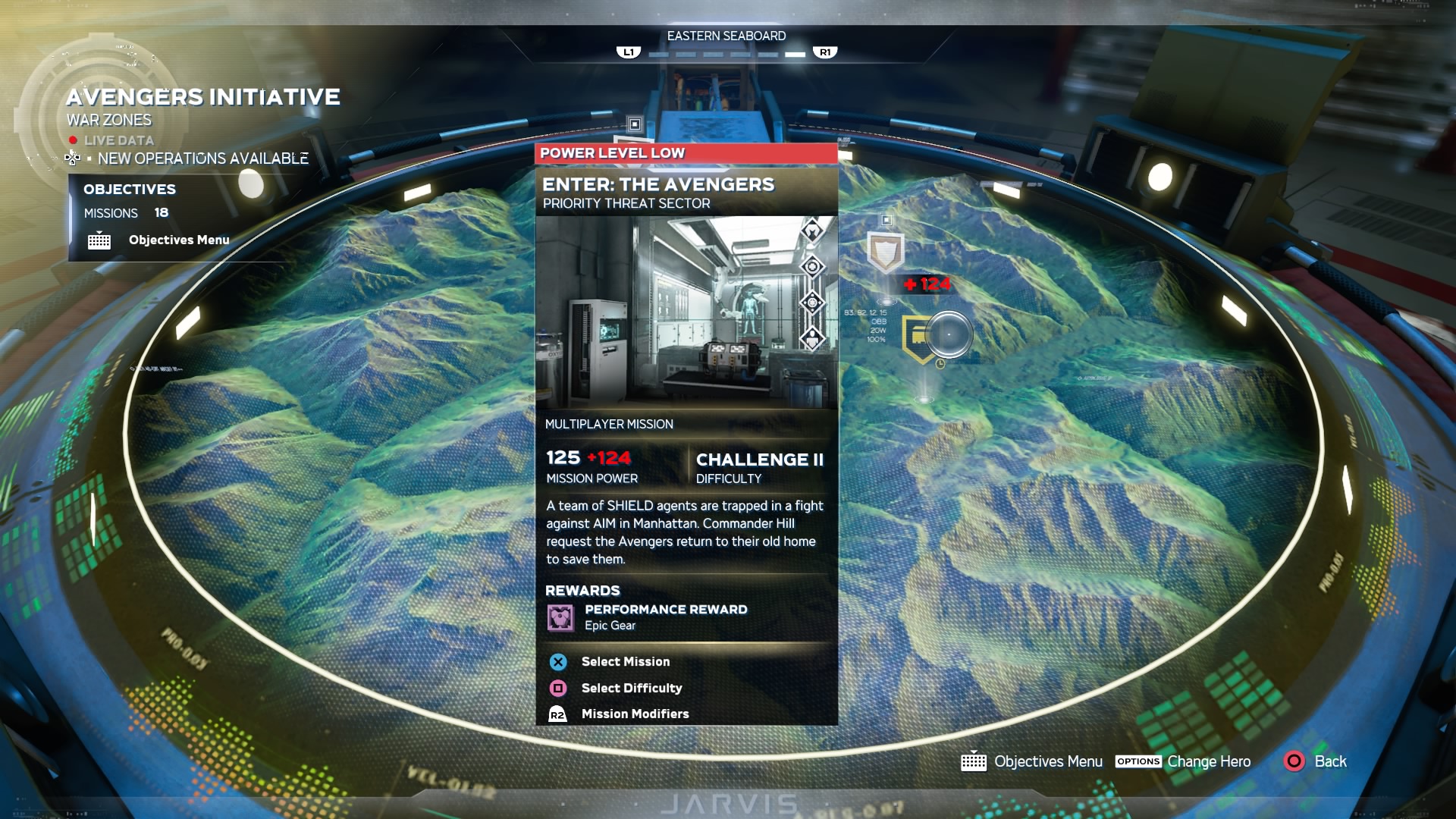
- A reliance on gear
- Boring and repetitive missions
- Premise of multiplayer is good
Alongside the Reassemble campaign sits Avengers Initiative - what we would say is the crux of the game. Initiative lets you team up with friends to take on the Marvel’s Avengers live-service experience. Avengers Initiative missions are accessed via the War Table - which is situated in the Chimera (the Avengers' home base). By accessing the War Table, you can select which type of mission you want to do: single-player Hero Missions, single-player War Zones or co-op War Zones.
While Hero missions progress the main story and are pretty cinematic, War Zones are PvE missions that see you working to complete Avenger-specific objectives in more expansive areas.
The War Table's multiplayer mode is great in theory, as is the fact that you can team up with friends in a strike team, but the missions - much like in Reassemble - are dull. Each seemed to have a similar design in terms of objectives, and there was little respite from the monotonous task at hand. Sure there is some side content to check out, like AIM depots to take over and strongbox strongholds to find, but typically these follow similar formatting again and again.
For example, most missions ultimately require knocking out waves of enemies in some facility or another, meanwhile you can find a hidden S.H.I.E.l.D. bunker if you feel up to it, where - once again - you clear waves of enemies.
We wish the story played a larger role in these sections, but it felt more like a side note.
Don't get us wrong: the worlds are pretty and varied, but they feel so empty - even with side content. We wanted to explore the areas, but there was no encouragement to do so - just vast landscapes with strongboxes and some depots in them. Strongboxes are filled with gear, resources and, on occasion, collectables and cosmetics.
You can equip different gear to your heroes, which range in levels and in the buffs they provide. For example, some will increase defence against certain types of attacks. You can equip one piece of heroic, ranged, melee and defence gear, then one minor artifact and one major artifact, to a hero at any one time. You then use your resources to increase the power of this gear, granting further buffs.
Gear isn't necessarily a bad idea, since Marvel's Avengers is a game-as-a-service in the vein of Destiny, but the game relies on it too much. You're constantly getting more and more gear, until you're not really quite sure what to do with it all. While it does help to have specific gear for certain missions, it feels like much of your time is spent changing the gear you have and constantly replacing it or powering it up, while the rewards for many Initiative missions is - you guessed it - more gear.
Verdict
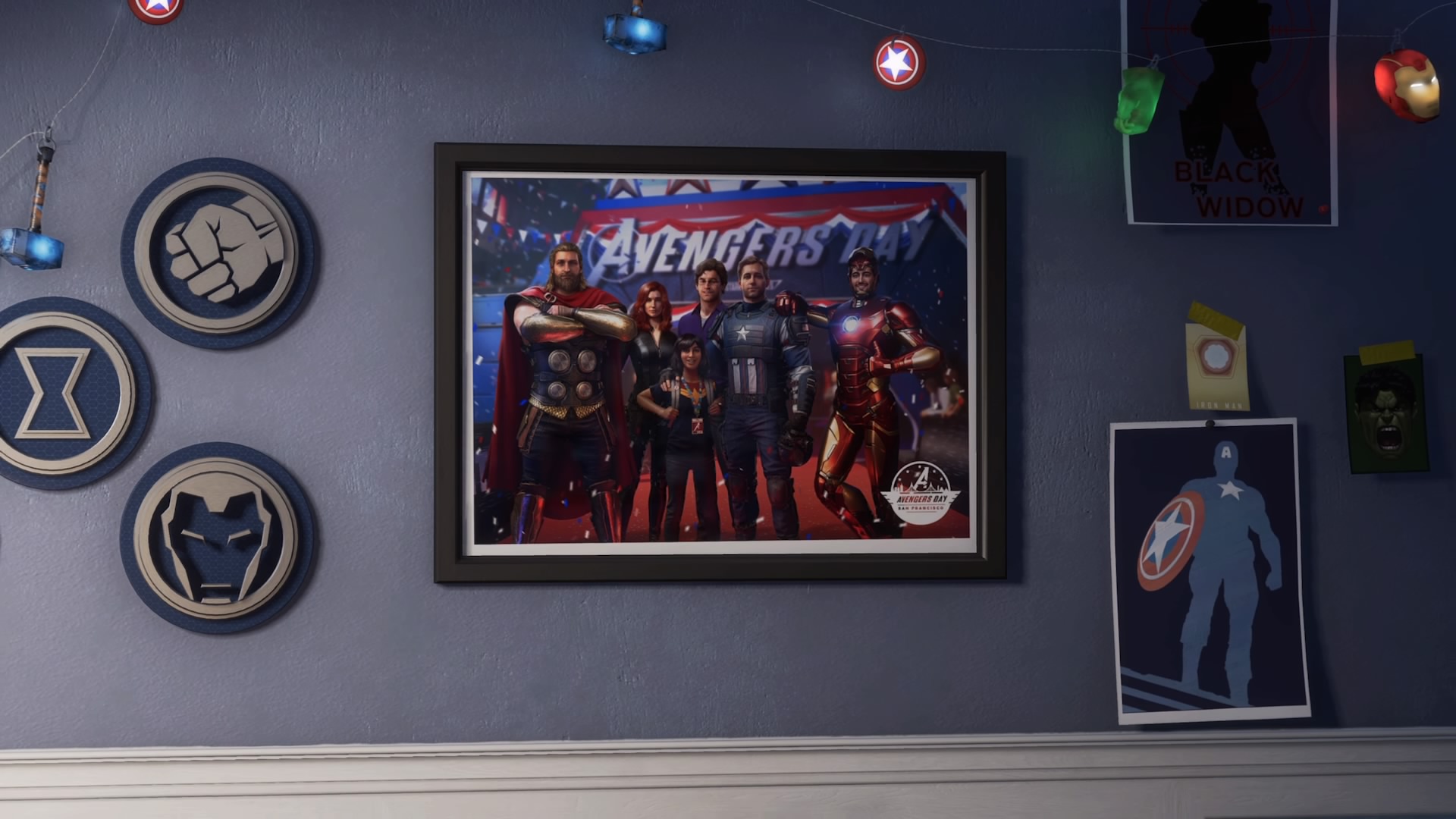
The good thing about a live-service game is that it has time to change. Marvel’s Avengers has certainly had a rocky start and is nowhere near as super as its name would suggest, but with Crystal Dynamics planning to support the game long-term, we’re hoping the repetitive missions, poor level design and monotonous combat can be worked on.
However, there’s some elements which are harder to change - namely the campaign. At this point though, if enough work can be done to lift the multiplayer, the campaign’s failings can be forgiven. What does worry us is that Marvel’s Avengers seriously struggled on PS4 - with consistent frame rate drops that almost made the game unplayable - and, speaking to our colleagues who have played the game on other systems, this is not necessarily an issue confined to PS4.
- Best superhero games: what to play while waiting for Marvel's Avengers to assemble
An award-winning games journalist, with seven years of experience in games journalism and a degree in journalism from City University, London, Vic brings experience from IGN, Eurogamer, The Telegraph, VG247, Dot Esports and more to the TechRadar table. You may have even heard her on the radio or speaking on a panel, as she’s previously appeared on BBC Radio 4, BBC Radio 5, BBC Radio Ulster and more. Not only is Vic passionate about games, but she's appeared on both panels and podcasts to discuss mental health awareness. Make sure to follow her on Twitter for more.
